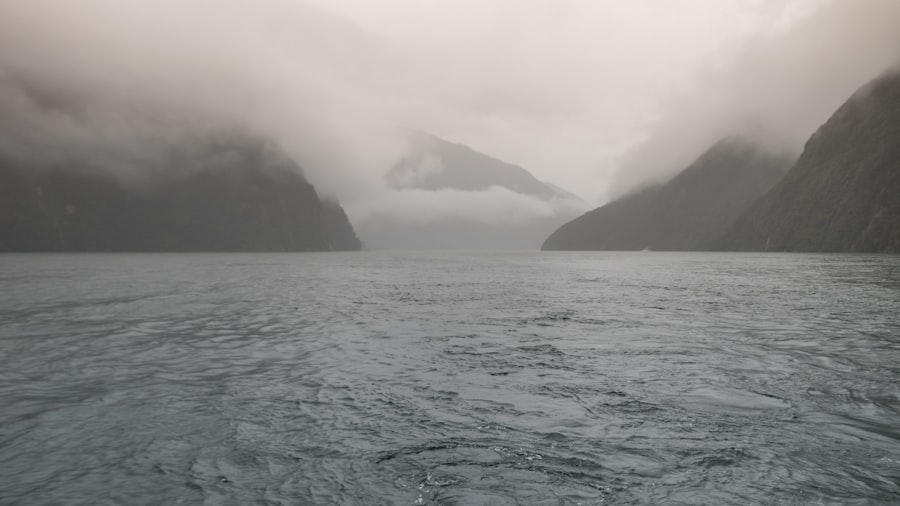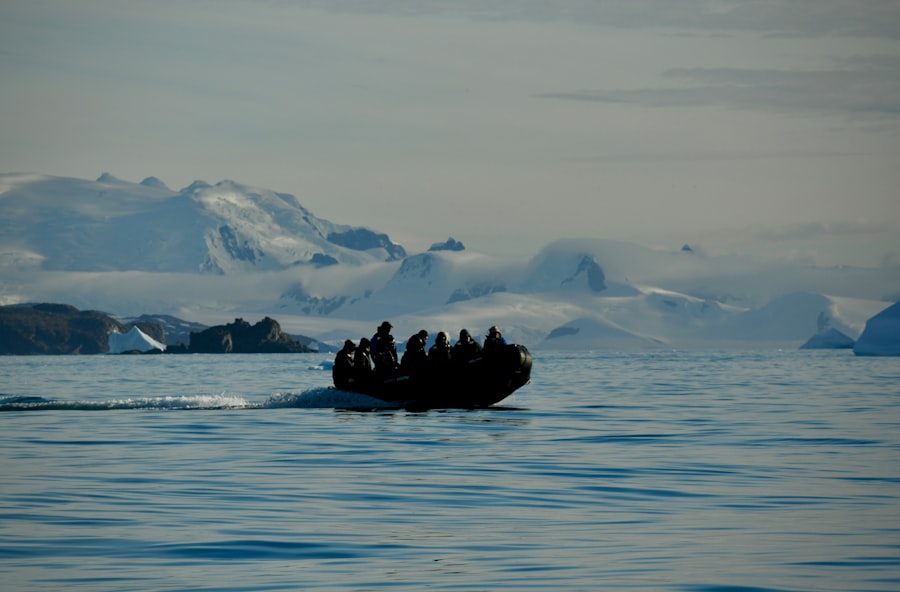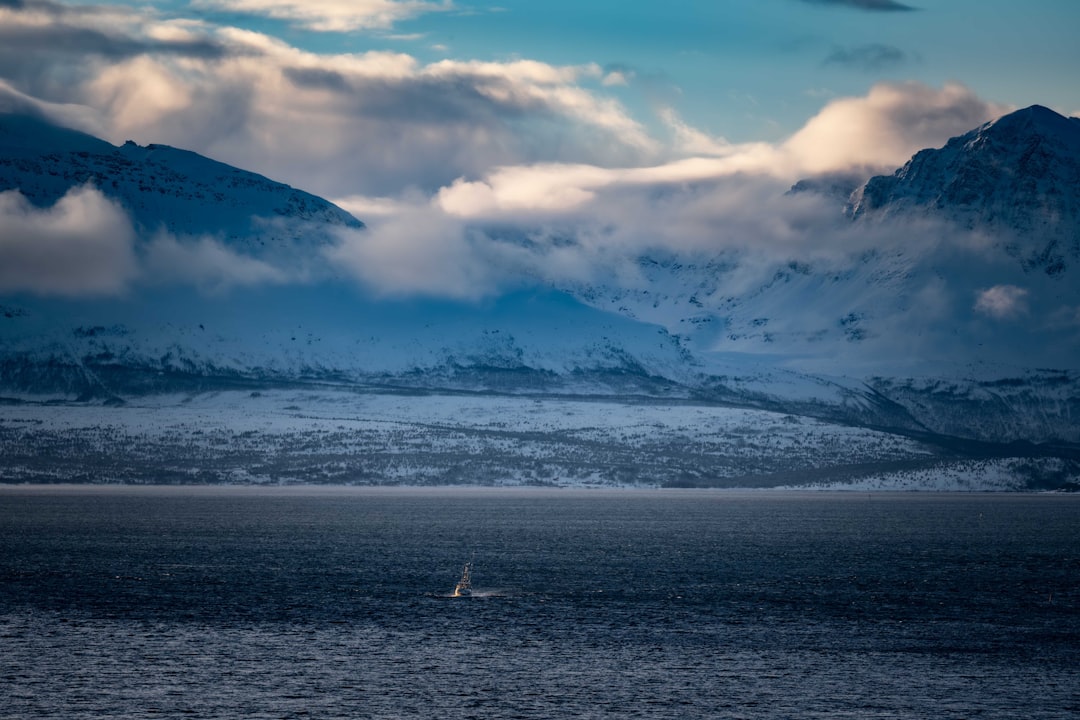The Drake Passage, a body of water that separates South America from Antarctica, is renowned for its tumultuous seas and unpredictable weather. Stretching approximately 800 kilometers (500 miles) between Cape Horn and the Antarctic Peninsula, it serves as a critical maritime route for vessels venturing to the southernmost continent. The passage is not only significant for its geographical location but also for its ecological importance, as it connects the Atlantic and Pacific Oceans, facilitating the movement of marine life and influencing global ocean currents.
Navigating the Drake Passage is often considered a rite of passage for adventurers and researchers alike. The waters are known for their rough conditions, with waves that can reach heights of up to 15 meters (49 feet) during storms. This unpredictability is due to the absence of land barriers, allowing winds to whip across the open ocean unimpeded.
As such, understanding the dynamics of the Drake Passage is essential for anyone planning a journey to Antarctica, as it sets the stage for the experiences that await travelers.
Key Takeaways
- The Drake Passage is a body of water between South America’s Cape Horn and the South Shetland Islands of Antarctica, known for its rough seas and challenging sailing conditions.
- Weather conditions in December can be unpredictable, with strong winds, rough seas, and potential for snow and ice. It is important to be prepared for these conditions when planning a trip through the Drake Passage.
- When choosing a vessel for a journey through the Drake Passage in December, it is important to consider the size, stability, and amenities of the ship, as well as the experience and expertise of the crew.
- Packing essentials for December travel through the Drake Passage include warm and waterproof clothing, sturdy footwear, sunscreen, and motion sickness medication.
- Safety precautions such as attending safety briefings, following crew instructions, and being aware of emergency procedures are crucial for a journey through the Drake Passage in December.
- Wildlife spotting opportunities in the Drake Passage may include sightings of whales, dolphins, seabirds, and possibly even penguins and seals.
- Activities and entertainment on board a vessel in the Drake Passage may include lectures, workshops, and social events to keep passengers engaged and entertained during the journey.
- Tips for managing seasickness in the Drake Passage include staying hydrated, getting fresh air, and choosing a cabin in the middle of the ship where motion is felt less.
- Navigation and route planning through the Drake Passage require careful consideration of weather patterns, ice conditions, and the expertise of the crew to ensure a safe and smooth journey.
- The historical significance of the Drake Passage as a route for exploration and trade dates back to the 16th century, with many famous expeditions and discoveries associated with this challenging waterway.
- Arrival and disembarkation at the Antarctic Peninsula mark the end of the journey through the Drake Passage, and the beginning of an unforgettable Antarctic adventure.
Weather conditions in December
December marks the height of summer in Antarctica, making it one of the most favorable months for exploration in the region. During this time, temperatures in the Drake Passage can vary significantly, with averages ranging from -2°C to 5°C (28°F to 41°F). While these temperatures may seem frigid compared to many other destinations, they are relatively mild for Antarctica, allowing for more comfortable travel conditions.
The long hours of daylight during December also enhance visibility and provide ample opportunities for wildlife observation. However, despite the warmer temperatures, weather conditions in the Drake Passage can still be highly variable. Travelers may encounter sudden storms or shifts in wind patterns that can lead to rough seas.
It is not uncommon for conditions to change rapidly, so those planning a trip should be prepared for a range of weather scenarios. Understanding these fluctuations is crucial for ensuring safety and comfort while navigating this iconic maritime route.
Choosing the right vessel

Selecting the appropriate vessel for a journey across the Drake Passage is paramount to ensuring a safe and enjoyable experience. Various types of ships are available, ranging from large cruise liners to smaller expedition vessels. Larger ships often provide more amenities and stability in rough seas, making them a popular choice for those who prioritize comfort.
However, smaller vessels can offer a more intimate experience, allowing travelers to get closer to wildlife and explore remote areas that larger ships cannot access. When choosing a vessel, travelers should consider factors such as size, stability, and onboard facilities.
A well-trained crew familiar with the challenges of navigating the Drake Passage can make all the difference in ensuring a smooth passage and enhancing the overall experience.
Packing essentials for December
| Item | Quantity | Description |
|---|---|---|
| Warm clothing | 2 sets | Thermal wear, sweaters, and jackets |
| Winter boots | 1 pair | Waterproof and insulated |
| Gloves and scarf | 1 set | To keep warm in cold weather |
| Travel-sized toiletries | 1 set | Toothbrush, toothpaste, shampoo, and soap |
| Portable charger | 1 | To keep devices charged on the go |
Packing for a trip across the Drake Passage in December requires careful consideration of both comfort and functionality. Given the variable weather conditions, layering is key. Travelers should pack moisture-wicking base layers, insulating mid-layers, and waterproof outer layers to protect against wind and rain.
Accessories such as gloves, hats, and scarves are also essential to keep extremities warm during excursions on deck or while exploring landings. In addition to clothing, travelers should not forget practical items such as sunscreen and sunglasses. The sun’s rays can be surprisingly strong in Antarctica due to the reflective nature of ice and snow.
A good pair of binoculars can enhance wildlife spotting opportunities, while a camera with a zoom lens will help capture the stunning landscapes and unique fauna encountered along the journey. By packing thoughtfully, travelers can ensure they are well-prepared for their Antarctic adventure.
Safety precautions
Safety is paramount when traversing the Drake Passage and exploring Antarctica. The unpredictable nature of the waters necessitates that travelers adhere to strict safety protocols. Before embarking on their journey, passengers should familiarize themselves with emergency procedures and safety equipment available on board.
This includes life jackets, lifeboats, and communication devices that may be used in case of an emergency. Additionally, travelers should remain vigilant about their surroundings while on deck or during land excursions. The icy terrain can pose slipping hazards, so wearing appropriate footwear with good traction is essential.
It is also advisable to stay within designated areas during landings and follow the guidance of expedition leaders to minimize risks associated with wildlife encounters or environmental hazards.
Wildlife spotting opportunities

One of the most alluring aspects of traveling through the Drake Passage is the opportunity to observe an array of wildlife unique to this region. December is an ideal time for wildlife spotting as many species are active during the summer months. Travelers may encounter various seabirds such as albatrosses and petrels soaring above the waves, while whales like humpbacks and orcas can often be seen breaching or spouting in the distance.
On land, penguins are a highlight for many visitors. Species such as Gentoo, Adélie, and Chinstrap penguins can be found nesting along the shores of islands in the region. Observing these charming creatures in their natural habitat provides an unforgettable experience that underscores the importance of conservation efforts in this fragile ecosystem.
With knowledgeable guides on board, travelers can gain insights into the behaviors and habitats of these remarkable animals.
Activities and entertainment on board
While crossing the Drake Passage can be an exhilarating experience in itself, many vessels offer a range of activities and entertainment options to enhance passengers’ journeys. Onboard lectures led by experts in marine biology, geology, and history provide valuable context about the regions being explored. These educational sessions allow travelers to deepen their understanding of Antarctica’s unique environment and its significance in global ecology.
In addition to educational programs, many ships feature recreational activities such as yoga classes or photography workshops that cater to diverse interests. Social gatherings in lounges or dining areas foster camaraderie among passengers as they share stories and experiences from their adventures. Evening entertainment may include film screenings or presentations about wildlife encounters, ensuring that there is never a dull moment during the crossing.
Tips for managing seasickness
Seasickness is a common concern for travelers embarking on a journey across the Drake Passage due to its notorious rough waters. To mitigate discomfort, it is advisable for passengers to prepare ahead of time by consulting with a healthcare professional about suitable medications or remedies. Over-the-counter options such as antihistamines or ginger supplements may help alleviate symptoms.
In addition to medication, there are several strategies travelers can employ while on board. Staying hydrated and consuming light meals can help maintain comfort levels during rough seas. Finding a stable spot on deck or focusing on the horizon can also assist in reducing feelings of nausea.
Engaging in light activities or distractions—such as reading or socializing—can further help manage symptoms until conditions improve.
Navigation and route planning
Effective navigation and route planning are crucial components of any successful journey through the Drake Passage. Experienced captains utilize advanced technology and weather forecasting tools to chart safe courses across these unpredictable waters. Understanding tidal patterns and wind conditions allows crews to make informed decisions about when to set sail and how to adjust routes as necessary.
Moreover, flexibility is key when navigating this region. Conditions can change rapidly, requiring crews to adapt their plans based on real-time assessments of weather patterns and sea states. This adaptability not only ensures passenger safety but also enhances opportunities for wildlife sightings and land excursions by allowing vessels to take advantage of favorable conditions when they arise.
Historical significance of the Drake Passage
The Drake Passage holds immense historical significance as it has been traversed by explorers and adventurers since the Age of Exploration.
The treacherous conditions have led many expeditions into uncharted territories, contributing significantly to our understanding of polar regions.
Throughout history, numerous explorers have braved these waters in pursuit of knowledge and discovery. Their journeys have paved the way for scientific research and conservation efforts that continue today. The legacy of these early adventurers serves as a reminder of humanity’s enduring curiosity about our planet’s most remote corners and highlights the importance of preserving these fragile ecosystems for future generations.
Arrival and disembarkation at the Antarctic Peninsula
As vessels approach the Antarctic Peninsula after crossing the Drake Passage, excitement builds among passengers eager to set foot on this pristine landmass. The dramatic landscapes characterized by towering icebergs and rugged mountains create an awe-inspiring backdrop for disembarkation activities. Upon arrival, travelers typically participate in guided excursions that allow them to explore iconic sites such as Deception Island or Paradise Bay.
Disembarkation procedures are carefully organized to ensure safety and efficiency as passengers transition from ship to shore. Expedition leaders provide instructions on how to navigate landings using zodiacs or small boats designed for shallow waters. This process allows travelers to immerse themselves fully in their surroundings while adhering to environmental guidelines aimed at protecting delicate ecosystems.
The experience of stepping onto Antarctic soil marks a significant milestone in any adventurer’s journey—a moment that encapsulates both wonder and respect for one of Earth’s last frontiers.
In December, the Drake Passage becomes a focal point for adventurers and researchers alike, as it is one of the most treacherous and fascinating bodies of water in the world. For those interested in learning more about the geographical and historical significance of this passage, a related article can be found on MyGeoQuest. This article delves into the unique challenges and natural wonders of the Drake Passage, offering insights into why it remains a critical route for explorers. To explore this topic further, you can read the full article by visiting MyGeoQuest’s detailed exploration of the Drake Passage.
WATCH NOW! Drake Passage: Earth’s Deadliest Waters Revealed
FAQs
What is the Drake Passage?
The Drake Passage is the body of water between the southern tip of South America and the northern tip of the Antarctic Peninsula. It is known for its rough seas and challenging sailing conditions.
What is the weather like in the Drake Passage in December?
In December, the weather in the Drake Passage can be quite unpredictable. It is the beginning of the Antarctic summer, so temperatures may be slightly milder, but strong winds and rough seas are still common.
Is it safe to travel through the Drake Passage in December?
Traveling through the Drake Passage in December can be challenging due to the rough seas and strong winds. It is important to be prepared for potentially difficult sailing conditions and to travel with an experienced crew.
What wildlife can be seen in the Drake Passage in December?
In December, travelers in the Drake Passage may have the opportunity to see a variety of wildlife, including whales, seals, and seabirds. This area is known for its rich marine life.
What are some popular activities in the Drake Passage in December?
Popular activities in the Drake Passage in December include wildlife watching, bird watching, and photography. Some travelers also enjoy the thrill of sailing through the challenging conditions of the passage.
